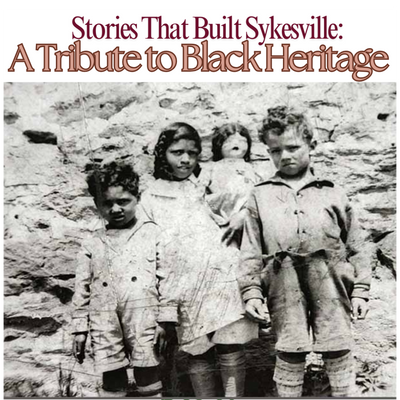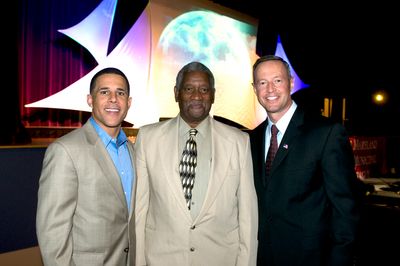
We invite you to join us on a journey—a journey long delayed for reasons rooted in painful truths: the flaws of humanity, the comfort of silence, and the ease of looking away. But that time has passed. Now, we are determined to confront the wrongs of the past, to shed light on the stories of the 13 Black families who settled in Sykesville. They built our town, grew with it, endured unimaginable challenges made even harder because they were Black.
This will be a journey of beauty and truth, one that unfolds piece by piece. Each week (or close enough), we’ll add to this page, sharing more about these untold stories—stories that began in chains. Chains that, though invisible today, persist in systemic injustice: unfair treatment, discrimination, police brutality, and more.
As a community, we have much work to do to break these chains. But every journey starts with a first step. Let ours begin here, with the stories of the Sykesville 13.
Black History Data Sykesville.xlsx
Black Census Tracing Sykesville The Row.xlsx
A heartfelt thank you to Adrienne Smith, Curator of the Gatehouse Museum, for her invaluable collaboration on this project.

Date and time
Wednesday, April 16 · 10:30am - 2pm EDT
Enoch Pratt Free Library
400 Cathedral Street Baltimore, MD 21201Show map
This program is recommended for individuals 55+; however, all are welcome.
Join us for Enoch Pratt Free Library’s FREE luncheon series, which offers patrons an afternoon of engaging conversations, performances, and activities. Pratt is excited to work in partnership with several community organizations to bring in a variety of dynamic presenters and performers, with rich academic and artistic backgrounds to lead these programs.
What’s on the menu:
In April, Pratt is excited to welcome Dr. Milbert Brown, Jr. of the Hubert V Simmons Museum of Negro Leagues Baseball, for an in-depth presentation of the history and richness of African-American baseball players. Dr. Brown’s lecture will highlight the legacy of Baltimore and Maryland players, as well as feature many artifacts from the Hubert V Simmons Museum's collection. Join us as we appreciate and recognize the contributions of these players as they pursued their rightful place in the realm of sports despite social barriers.
After the workshop, participants will be invited to take part in a facilitated activity or participate in our regular book discussion group led by Pratt Librarians from the Fiction Dept.
Lunch will be provided.
Please contact Madelyn McCaully at [email protected] or 410-396-5494, if you have questions about registration or to request accommodations.
As Black History Month comes to a close, our commitment to uncovering and sharing the untold stories of Sykesville’s Black community continues to grow! We’re thrilled to share that at Monday’s meeting, the Town of Sykesville officially adopted a proclamation recognizing February 2025 as Black History Month, with the theme “African Americans and Labor.” This critical step was passed with overwhelming support, demonstrating dedication to celebrating contributions that shaped our community.
Want to hear Mayor Link read the proclamation? Tune in at minute 43 on the Mayor and Town Council video!
Beautiful things are happening in Sykesville—let’s keep the momentum going! #BlackHistory #SykesvilleHistory #HonoringThePast #BuildingTheFuture

Mr. Eugene Johnson Sr. lived in Sykesville most of his life. He is one of 14 children. He is married to Mary Johnson, and they have two adult children, three grandchildren, and two great-grandchildren. Mr. Johnson lived for about 12 years in what is known as the Colored Schoolhouse in Sykesville, Maryland. He moved his family there in the late 1960s.
The Colored Schoolhouse started as a school for Black children during segregated times, on January 4, 1904. It was sold in 1939 at an auction and converted into a residence.
Mr. Johnson lived in the schoolhouse residence, which was in a neighborhood of Black families. None of the homes had indoor plumbing or running water. Mr. Johnson met with some contractors that he knew around 1975, with blueprints, to negotiate having housing built with plumbing and running water for low-income families. It took about three years (1978) before it was approved to be built.
In 1981, the Schoolhouse Road development was created. Twenty-six (26) three-bedroom townhomes with plumbing and running water were ready to be lived in. Mr. Johnson and his family were one of the first to move into the new homes. By 1982, all twenty-six (26) homes were occupied in the now integrated neighborhood. Leaving the schoolhouse behind was not easy, but Mr. Johnson said that he would always make sure that the house remained standing for historical purposes.
After settling into the new townhome and neighborhood, Mr. Johnson began to run for Town Council in Sykesville. He was elected for his first term in 1985. Mr. Johnson served as a councilman and as the President of the Council throughout his long 24 years on the board. Mr. Johnson retired from his councilman duty in 2009 but remains a big part of the Town of Sykesville. His pictures with his years of service on the council are hanging on the wall at the Sykesville Town House.
The Colored Schoolhouse building, now standing unoccupied since 1982 and slowly deteriorating, became a target and was repeatedly slated to be demolished. Mr. Johnson, with the help of the Town of Sykesville, went to meetings with the county and fought to keep the only Black schoolhouse in Sykesville standing. In the mid-1990s, restoration began on the schoolhouse.
Today, it still stands and is utilized for historical field trips for schools and organizations. Best of all, it is used for the Homework Club. The club was organized by Mrs. Pat Greenwald and other retired teachers to assist all children in the area with their homework throughout the school year, providing guidance and support for various activities and helping prepare them in the summer for going back to school.
Mr. Eugene Johnson, now 86 years old, remains involved in the town and is very proud of what Sykesville has become. He believes in what we all know the town will continue to be—a wonderful, small, diverse town where all people are welcomed, included, protected, and loved!
Mary Castle
Pictured right to left: Lieutenant Governor Anthony Brown, Eugene E. Johnson, Governor O'Malleyh

The Sykesville Giants were a semi-professional African American baseball team that played in Sykesville, Maryland, during the segregation era. They were part of the rich tradition of Black baseball teams that provided opportunities for Black athletes to compete at a high level when mainstream leagues were still segregated.
Mentions in the Carroll County Times archives:
https://cctimes.carr.org/documents/CCT_05141998.pdf#search=%20baltimore%20elite%20giants
https://cctimes.carr.org/documents/CCT_03311997.pdf#search=%20baltimore%20elite%20giants